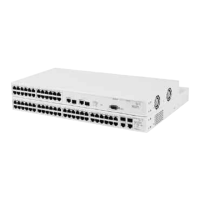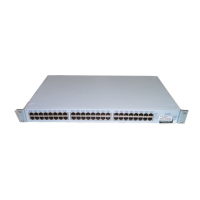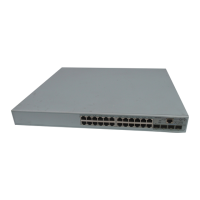Implementing IP Routing 89
Defining an IP Interface
After you decide the VLAN index, IP address, and subnet mask for each IP
interface you want to create, you can define each interface using the
Command Line Interface or the Web interface.
Before you assign IP addresses, map out the entire network and
subnetwork IP addressing scheme. Plan for future expansion of address
numbers as well.
Remember that you must define a VLAN before you define the IP
(routing) interface. See Chapter 8
for more information on VLANs.
You Switch provides the following advanced IP features:
■ Routing Information Protocol (RIP)
■ User Datagram Protocol (UDP) Helper
■ ARP Proxy
■ Internet Control Message Protocol (ICMP)
These features are discussed later in this chapter.
You can use the Routing Information Protocol (RIP) protocol to take
advantage of routing capabilities. RIP is discussed in this chapter.
Administering IP Routing
Keep these points in mind while you administer the IP network:
■ Flush the ARP cache regularly if you set the age time to 0.
■ Set up a default route.
The Switch uses the default route to forward packets that do not
match any other routing table entry. You may want to use the default
route in place of routes to numerous destinations that all have the
same gateway IP address. If you do not use a default route, ICMP is
more likely to return an
ICMP Network Unreachable error.
■ Before you can define static routes, you must define at least one IP
interface. See “
Defining an IP Interface” on page 89 for more
information. Remember the following guidelines:
■ Static routes remain in the routing table until you remove them or
the corresponding interface.
■ Static routes are removed during a system initialize.
